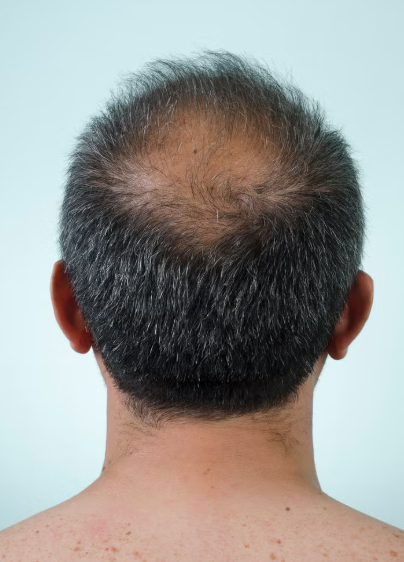Hair loss is something that many men, even younger ones, face at some point in their lives. It’s a frustrating issue, often leaving people wondering why it’s happening. While genetics certainly play a significant role, there are also various other causes of hair loss that many don’t realize. Fortunately, there are effective treatments available that can help slow down or even prevent further hair thinning. Here’s a breakdown of the causes of hair loss and the steps you can take to stop it.
Non-Genetic Causes of Hair Loss
While genetics are a major factor, several other common reasons can contribute to hair loss in men. Let’s dive into some of the key causes.
Stress-Induced Hair Loss
We’ve all experienced stress at some point, and it turns out it’s one of the leading non-genetic causes of hair loss. During stressful times, your body diverts energy from non-essential functions like hair growth, which can lead to noticeable hair thinning. Stress may even cause you to unintentionally pull your hair out as a way of coping. The good news? Once the stressor is eliminated, hair growth typically resumes.
Poor Hair Care Practices
Certain hair treatments like frequent coloring, perming, or relaxing can damage your hair over time. These chemical treatments can weaken your hair, making it prone to breakage and thinning. If you’re considering changing your look, it’s worth considering the long-term effects of these treatments on your hair’s health.
Scalp Infections
Scalp infections are relatively common and easy to spot, usually characterized by scaly, inflamed patches on the scalp. If you notice these symptoms, it’s essential to consult a healthcare professional. With the proper treatment, you can resolve the infection and restore your hair to its healthy state.
Genetics: The Leading Cause of Male Pattern Baldness
For many men, male pattern baldness (MPB) is a hereditary condition. While it’s often believed that your mother’s father determines how your hairline will look, there’s more to the story. Research has shown that the variant of the X chromosome inherited from your mother is a key factor in early hair loss, but there’s also a connection to chromosome 20. If both of these genetic markers are present, you’re at a much higher risk of experiencing MPB.
Minoxidil: A Highly Effective Treatment
If you’re noticing signs of hair loss, such as thinning or a receding hairline, it’s time to consider Minoxidil, a treatment that’s proven to help with hair growth. More than 70% of men using Minoxidil have reported positive results, with thicker, stronger hair after using it consistently. Minoxidil is a topical solution that you apply directly to the scalp, usually twice a day, and it works by improving blood flow to the hair follicles, promoting healthier hair growth.
Side Effects: While rare, some men may experience irritation or dryness when using Minoxidil due to ingredients like alcohol or propylene glycol. For those with sensitive skin, or men who have undergone hair transplant procedures, alcohol-free and propylene glycol-free Minoxidil options are available and may be a better fit.
Start Treatment Early
When you notice early signs of hair loss, it’s crucial to take action right away. Minoxidil is most effective when used as a preventative measure, so the sooner you start, the better. The most common concentration is a 5% solution, and research suggests that higher concentrations don’t offer significant benefits and may increase the risk of side effects. Consult a hair specialist to help determine the cause of your hair loss and to create a personalized treatment plan.
By recognizing the causes of hair loss and taking early action, you can take control of your hair health and prevent further thinning. Whether it’s addressing stress, altering hair care routines, or using effective treatments like Minoxidil, it’s never too early to start.

发表回复